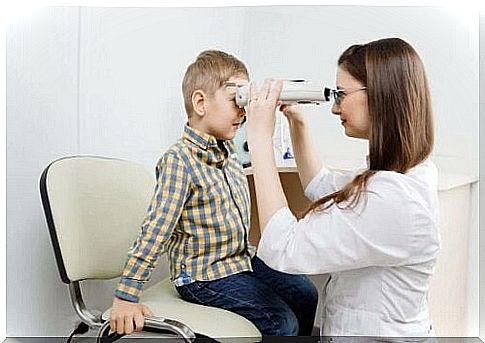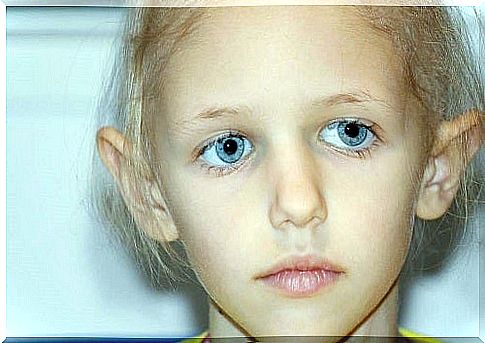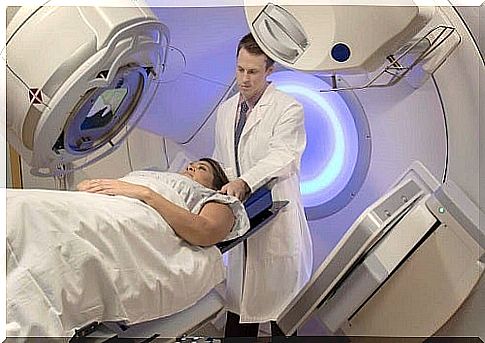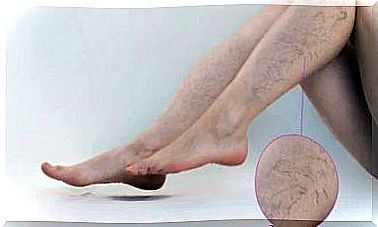Retinoblastoma Symptoms And Types Of Treatment

In today’s article, we will talk about the causes and symptoms of retinoblastoma, as well as the types of treatment we have available.
Retinoblastoma is a disease that affects the eyes and usually starts at an early age. In fact, it is the most common eye cancer in childhood. Currently, it represents 3% of cases of cancer in children, with an incidence of 1 case in 15,000-18,000 births. These data show that approximately 5,000 new cases of retinoblastoma are diagnosed each year .
On average, the affected child is diagnosed with retinoblastoma around the age of 18 months. 90% of cases are discovered in the first 5 years of life, and boys and girls are equally affected.
The origin of retinoblastoma is known. The survival rate is between 86% and 92% globally (70% in developing countries). But what are the symptoms of retinoblastoma? What treatments do we have available? In the following, we present everything you need to know about this topic.
Causes of retinoblastoma
Retinoblastoma is an oncological disease associated with the mutation of a gene, which is called the RB1 gene (“retinoblastoma gene”). This gene is located on chromosome 13.
One of the roles of chromosome 13 is to suppress the complex mechanisms of the retinal cell system through the RB1 gene. However, if both loci of this chromosome are affected, retinoblastoma is triggered.
Less than 10% of patients have a family history of retinoblastoma. But about 30-40% of cases are hereditary.

Symptoms of retinoblastoma
The most common symptom of retinoblastoma (and generally the first to occur) is leukocoria. Leukocoria is a white reflection that can be seen when the retina is exposed to light. It is caused by tumor that blocks the red retina reflex.
Other possible symptoms of retinoblastoma are:
- squint
- Vision problems
- Red eyes
- Eye pain
- Ocular proptosis
Diagnosis of retinoblastoma
Although ophthalmologists can diagnose this disease during a routine check-up, other diagnostic methods can also be used, such as:
- DNA tests (can find and document hereditary variables of retinoblastoma, both in the child and in other family members)
- Ocular sonogram
- Computed tomography
- Nuclear magnetic resonance
Each of the above-mentioned diagnostic methods helps specialists to differentiate retinoblastoma from pseudoretinoblastoma. Pseudoretinoblastoma is a group of tumors that simulates the symptoms and characteristics of retinoblastoma.
Types of treatment for retinoblastoma
Retinoblastoma treatment has three main objectives:
- Saving the life of the child suffering from this disease
- Protecting the affected eye
- Maintaining an optimal view
In most cases, the treatment will be customized according to the patient’s needs. At the same time, specialists will take into account the complexity of the situation. The most popular treatments for retinoblastoma are:
External beam radiotherapy
This type of treatment involves controlling the tumor locally and usually has no long-term effects on the retina. But the mortality rate associated with radiotherapy with the external beam is very high. Moreover, it could stop the development of facial bones.

Radioactive isotope plates
During this treatment, the doctor places radioactive plaques on the eyes. This variant reduces the exposure of healthy tissue to radiation, but can only attack a portion of the tumor.
Chemotherapy
It is reserved for the most complicated and advanced cases of retinoblastoma. Doctors can combine it with beam radiotherapy to shrink tumors.
conclusions
Retinoblastoma is a cancerous disease that mainly affects children under 5 years of age. It is caused by a genetic mutation and about 30% of cases have a hereditary component. The most common symptom is leukocoria, which involves the observation of a white reflection when the retina is exposed to light.
Last but not least, there are various treatments for retinoblastoma. Each has advantages and disadvantages, but all contribute to the protection of the patient’s life, eye and vision.









